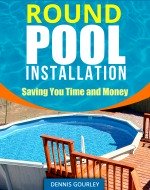Hold Down Plates

hold down plate
I need to replace the straps and hold down plates at the bottom of my 15 X 25 foot oval pool. I managed to get new straps but I can't find the metal hold down plates anywhere so I've decided to make them myself.
Here is my problem. The hold down plates that are there now are 48 inches long (when I say long I mean from right to left) parallel to the sides and only a bit short of 8 inches wide (by wide I mean extending toward the middle). They have a big bump up of almost 2 inches. There are 2 of them on each side attached to each other with a thin strip of metal and then attached to the other side with two 4" straps.
My problem is the length. I have a 30" metal breaker tool. Can I make the hold down plates 30 inches long parallel with the pool sides with a bump up of 1 inch and have them extend further out toward the middle of the pool kind of like what your diagram looks like or do I need to duplicate what was there exactly?
Can the straps and hold down plates be set below a little below the "L" support (which is right under the bottom rail extending a couple of inches into the pool) so they can be covered with more sand or do they need to be set at the same level of the "L"? Now the bump up is above the bottom rail, if I make the bump level with the bottom rail,the straps under the hold down plate will need to go down a bit before they come across.
Do the hold down plates need to be attached to each other (I don't mean going across the pool I know that must be, I mean is it necessary to attach them to each other on the same side?) And lastly what kind of metal should I use for the plates, what gauge and what dimensions should the finished plates be if I can make them like yours.
Hi
First off, don't over think this. Hold down plates, or pressure plates, just transfer the weight of the water onto the front of the brace channels to hold them down, otherwise they would rise up through the liner as the pool filled. So yes, they are very important, and to leave them out is fatal, but what they are made of and how they are made is of little importance.
These pages all show pressure plate, maybe giving you an idea of the options.
Above Ground Pool Deck and Awning
Above Ground Oval Installation
This page shows one of my pools.
This is an Asahi Pool, I'm thinking yours might be also, just a
These pressure plates were basically flat and ran in one piece the length of each side. It worked fine, the foam board did not have to be cut around the hold down plates.
For twenty plus years Asahi pressure plates were tall and were placed on top of the brace channel. This required a lot of sand along each straight side. A few years back they decided to bolt these same plates underneath the channel. This, I would think, would make installation a nightmare, but, it resulted in the result you are looking for.
I started out building Doughboy brand pools many years ago. They had a pressure plate similar to yours but wider, with an extra rise and low. These plates overlapped and were just laid in place. No nuts and bolts, nothing to hold them in place but the weight of the water. That's really all it takes.
I used this theory when I started building Asahi pools. The plates were shorter than yours, maybe 30". I laid them in place just before spreading the sand. No nuts and bolts, no connecting pieces. When the connectors came out I tossed them. When they decided the under side of the channel would be a good place for them I didn't do it.
I take great pride in my level pools. Setting the channel level is hard enough, the pressure plates should not complicate this. I always save them until last and lay them over the channels.
Doughboy changed their pressure plates to a completely flat one with a one inch elbow at each end. The elbows were meant to face down. The plates were meant to be bolted to the channel and then attached to each other at the ends. That design completely messed up my way of setting braces, I have no idea what they were thinking. I turned them upside down, with the lips pointing up, and laid them in place just like I had been doing for 20 some years.
So, don't over think this. Put some metal over the channels and be done with it. It does not matter if they are connected, or if they are bolted to the channel. With that much water pushing down on them they will not move.
So much of this over engineering was done when everyone realized that so few people could use a tape measure. With the plates bolted to the channels, and then connected, it became much harder to mess up and have your side braces going every witch way.
I hope somewhere in all of this you found something you could use.








